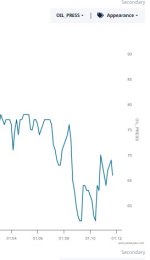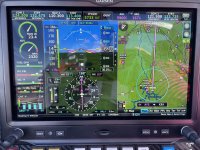I now have four flights and about three hours on my RV-14A.
She is going to be a great airplane, already flies really well, and I am quite impressed with the smoothness of the IO-390 engine.
Couple questions for the group.
Oil Pleasure. At anything other than idle the oil pressure is firmly in the green (72 psi), but at low idle it is dropping barely into the red range (48 psi). Do I need to increase the idle pressure?
Also, I have not been able to find a manifold pressure range for the instrument. What is everyone using for green/yellow/red.
Thanks,
-Dan
She is going to be a great airplane, already flies really well, and I am quite impressed with the smoothness of the IO-390 engine.
Couple questions for the group.
Oil Pleasure. At anything other than idle the oil pressure is firmly in the green (72 psi), but at low idle it is dropping barely into the red range (48 psi). Do I need to increase the idle pressure?
Also, I have not been able to find a manifold pressure range for the instrument. What is everyone using for green/yellow/red.
Thanks,
-Dan







